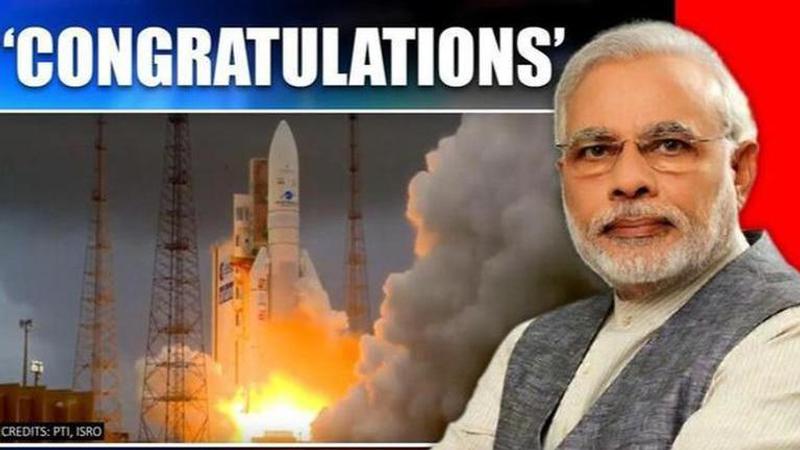Published 21:24 IST, January 17th 2020
PM Modi congratulates ISRO for successfully launching GSAT-30
PM Modi, on Friday, congratulated the Indian Space Research Organisation (ISRO) for successfully launching their first satellite launch of the new decade.

PM Modi, on Friday, congratulated the Indian Space Research Organisation (ISRO) for successfully launching their first satellite - GSAT-30, in the new decade. The Prime Minister also hailed the new satellite and listed down the enhanced benefits that the satellite will provide to broadcasting and communication in India. Furthermore, PM Modi wished ISRO for conducting more successful endeavours in the future.
Ariane 5 rocket successfully launches GSAT-30
The Ariane5 flight VA251 carrying ISRO's ‘GSAT-30’ and Eutelsat Konnect satellites was successfully launched from French Guiana at 2.35 am IST on January 17 by Arianespace. The launch of the communication satellite is ISRO’s first satellite launch of the year 2020. This satellite will help expand the coverage of Indian DTH (Direct-to-Home) to a larger audience in Asia, which means Indians settled abroad can enjoy Indian DTH services. This satellite will be India's first launch of this decade.
The mission life of 15 years
ISRO said that the GSAT-30 is to serve as a replacement to INSAT-4A spacecraft services which had a limited coverage area. INSAT-4A’s usage of the Ku-band and C-band is how DTH operators like TataSky, Airtel TV, Dish TV, and others provide services to customers in India. The GSAT-30 will provide Indian mainland and islands coverage in Ku-band and extended coverage in C-band covering Gulf countries, a large number of Asian countries and Australia, according to ISRO.
Geo-stationery satellites that orbit Earth at the altitude of over 35,000 km above the equator are used for transmission of television channels. Satellite transmission of television channels is usually done using two types of bands. These bands are the C band with frequencies ranging from 4.0 to 8.0 gigahertz and the Ku Band with frequencies ranging between 12 to 18 gigahertz.
The 3,357 kg GSAT-30 is said to have a mission life of 15 years wherein it will be an operational communication satellite for DTH, television uplink and VSAT services. The satellite is a successor of the INSAT/GSAT satellite series. INSAT-4A was launched in 2005 and designed to last 12 years, however, its advanced tech allowed it to serve for fifteen years.
Updated 21:24 IST, January 17th 2020




